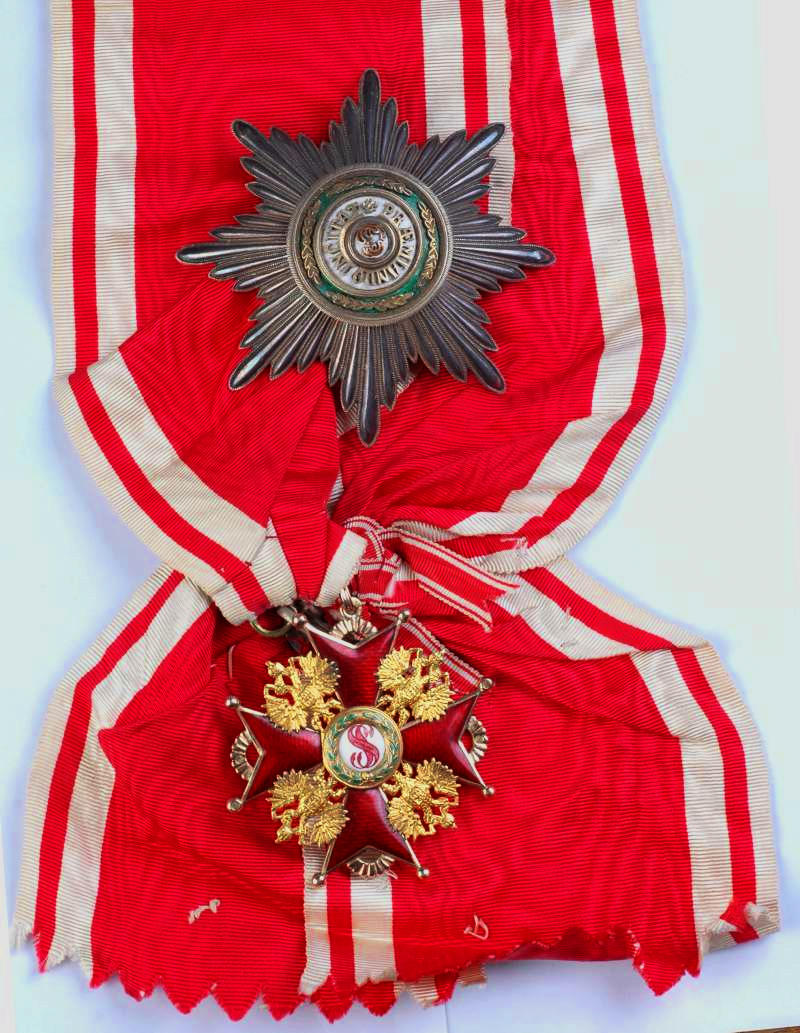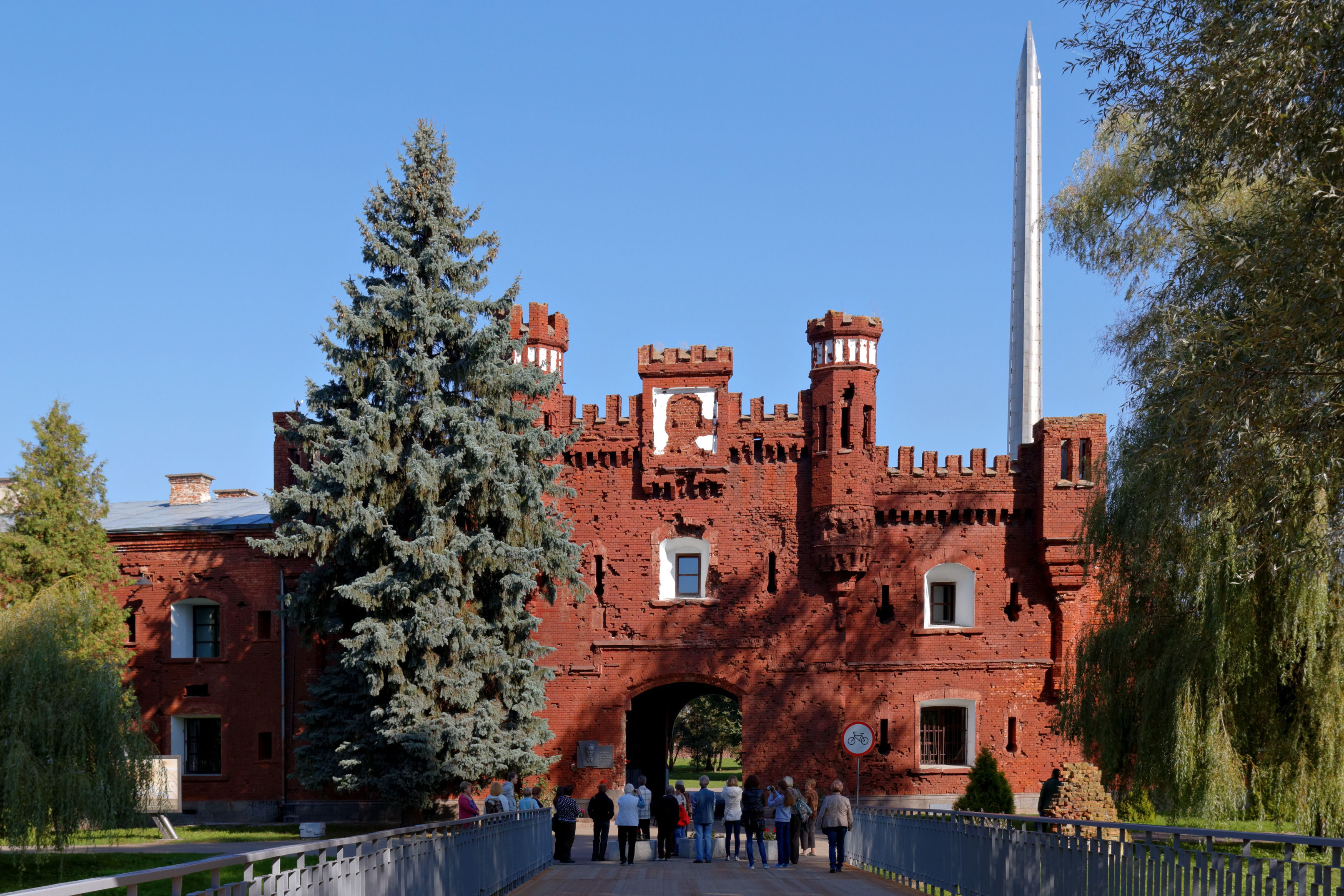|
Pavel Sytin
Pavel Pavlovich Sytin () (30 July .S. 18 July1870 Skopin – 22 August 1938 Moscow) was a Russian and Soviet military leader who reached the rank of major general in the Imperial Russian Army. He fought in the Russo-Japanese War and World War I. Biography Early life Sytin was born in Skopin in the Russian Empire's Ryazan Governorate on 30 July ( O.S. 18 July) 1870, the son of a rider in a lancer regiment who had been promoted to a position as an official in a military department. He graduated from the Kiev Cadet School (later the Kiev Military School) in 1892. Imperial Russian Army Upon graduation from the Kiev Cadet School in 1892, Sytin began his Imperial Russian Army career. He graduated from the Nikolayev Academy of the General Staff in 1899 in the first category. He took part in the Russo-Japanese War of 1904–1905. From 1908 to 1909 he was the head of the combat department of the headquarters of the Brest-Litoŭsk Fortress. In 1909, he became an instructor at a milit ... [...More Info...] [...Related Items...] OR: [Wikipedia] [Google] [Baidu] |
Skopin, Russia
Skopin () is a town in Ryazan Oblast, Russia, located on the Vyorda River ( Oka's basin) southwest of Ryazan. Population: History Skopin is considered to be one of the oldest towns in Ryazan Oblast. A settlement named Likharevskoye Gorodishche near present-day Skopin was founded some time in the 12th century. It was fortified with moats and ramparts for protection against the Cuman people. In 1663 (or 1597, according to another accountDavies has Skopin as part of the Abatis Line, which would put it before 1600 (Brian L. Davies. ''Warfare State and Society of the Black Sea Steppe'', 2007, p. 45)), the Tsar built a wooden fortress on the spot of today's Skopin, which would become a part of the defense system on the southeast of the Grand Duchy of Moscow. It had been called Skopinskaya sloboda since the late 17th century. In 1778, the town was renamed Skopin. In the 18th century, the town lost its military significance. In the second half of the 19th century, mining for b ... [...More Info...] [...Related Items...] OR: [Wikipedia] [Google] [Baidu] |
Order Of Saint Stanislaus (House Of Romanov)
The Imperial Order of Saint Stanislaus (; ), also spelled Stanislas or Stanislav, is a Russian dynastic order of knighthood founded as '' Order of the Knights of Saint Stanislaus, Bishop and Martyr'' in 1765 by King Stanisław II Augustus of the Polish–Lithuanian Commonwealth. In 1831 after the downfall of the November Uprising, the order was incorporated into the Chapter of Russian Orders as part of the honours system of the Russian Empire by Emperor Nicholas I of Russia. In 1839, the Russian Order of Saint Stanislaus received new statutes, including granting status of nobility on its recipients in all three classes. As a result of the Russian Revolution 1917, activities were suspended by the Soviet Union, although it has since been awarded by the head of the Imperial House of Romanov as a dynastic order. When in 1918 Poland regained its independence as the Second Polish Republic, a Polish order was introduced as a successor to the Polish Order of Saint Stanislaus, the Orde ... [...More Info...] [...Related Items...] OR: [Wikipedia] [Google] [Baidu] |
Brest Fortress
Brest Fortress (; ; ; ), formerly known as Brest-Litovsk Fortress, is a 19th-century fortress in Brest, Belarus. In 1965, the title Hero Fortress was given to the fortress to commemorate the defence of the frontier stronghold during the first week of Operation Barbarossa, when Axis forces invaded the Soviet Union on 22 June 1941. The title "Hero Fortress" corresponds to the title " Hero City" that the Presidium of the Supreme Soviet of the Soviet Union awarded to twelve Soviet cities. Description The Brest fortress has sustained its original outline of a star shaped fortification since its construction in the early 19th century. The Citadel, the core of the fortress, was on the central island formed by the Bug River and the two branches of the Mukhavets River. The island was skirted by a ring of a two-storied barrack with 4 semi-towers. The 1.8 km long barrack comprised 500 rooms to accommodate 12,000 soldiers within thick walls built from super strong red brick ... [...More Info...] [...Related Items...] OR: [Wikipedia] [Google] [Baidu] |
Headquarters Unit
A headquarters unit is a specialised military unit formed around the headquarters of a commanding officer and the requirements of that position. As such, a headquarters unit is always a component of a larger unit. Examples include: * headquarters battalion (controlling a regiment, brigade or larger unit); * headquarters company (military unit) (controlling a battalion); * headquarters platoon (controlling a company) Specific examples include: * Headquarters and Headquarters Company (US Army) * Headquarters and Service Company (US Marine Corps) References See also * Corporate headquarters Military organization unit Unit may refer to: General measurement * Unit of measurement, a definite magnitude of a physical quantity, defined and adopted by convention or by law **International System of Units (SI), modern form of the metric system **English units, histo ... * {{Mil-stub ... [...More Info...] [...Related Items...] OR: [Wikipedia] [Google] [Baidu] |
Military Academy Of The General Staff Of The Armed Forces Of Russia
The Military Academy of the General Staff of the Armed Forces of the Russian Federation () is the senior staff college of the Russian Armed Forces. The academy is located in Moscow, on 14 Kholzunova Lane. It was founded in 1936 as a Soviet institution, based on higher command courses that had been established at the M. V. Frunze Military Academy, itself founded in 1918. An General Staff Academy (Imperial Russia), earlier General Staff Academy had existed during the Imperial Russia, Imperial period, since 1832. Students were, and probably still are, admitted to the Academy in the Military rank, ranks of lieutenant colonel, colonel, and General-Major (one star). Most were colonels or newly promoted generals. Officers enter in their late 30s, as a general rule. Officers selected for this academy would have first attended the appropriate service or branch academy (see Military academies in Russia). Graduates who were not already generals or admirals usually were promoted to this ran ... [...More Info...] [...Related Items...] OR: [Wikipedia] [Google] [Baidu] |
Kiev Military School
The Military Institute of Telecommunication and Information Technologies named after the Heroes of Kruty () is an institution of higher military education in Ukraine and part of the State University of Telecommunications, located in Pechersk neighborhood of Kyiv. In the Soviet times (since 1965) it was known as the Kyiv Military Engineering College of Signal (). From 2001 – 2013, it was part of the Kyiv Polytechnic Institute. It is an important educational center for high-tech electronics and telecommunications and has a branch in Poltava. Historical outlook Kiev Military School The institute is located in the same building as the original city's school of cantonists that was built in Kyiv in 1839. In 1865 on decree of the Russian Emperor Alexander II, the school was transformed into the Kiev Infantry Cadet School. In 1897 it was renamed again into the Kiev Military School and just before World War I into the 1st Kiev Military School. In the fall of 1915 it was rename ... [...More Info...] [...Related Items...] OR: [Wikipedia] [Google] [Baidu] |
Regiment
A regiment is a military unit. Its role and size varies markedly, depending on the country, military service, service, or administrative corps, specialisation. In Middle Ages, Medieval Europe, the term "regiment" denoted any large body of line regiment, front-line soldiers, recruited or conscripted in one geographical area, by a leader who was often also the feudal lord ''in capite'' of the soldiers. Lesser barons of knightly rank could be expected to muster or hire a Company (military unit), company or battalion from their manorial estate. By the end of the 17th century, infantry regiments in most European armies were permanent units, with approximately 800 men and commanded by a colonel. Definitions During the modern era, the word "regiment" – much like "corps" – may have two somewhat divergent meanings, which refer to two distinct roles: # a front-line military formation; or # an administrative or ceremonial unit. In many armies, the first role has been assumed by i ... [...More Info...] [...Related Items...] OR: [Wikipedia] [Google] [Baidu] |
Lancer
A lancer was a type of cavalryman who fought with a lance. Lances were used for mounted warfare in Assyria as early as and subsequently by India, Egypt, China, Persia, Greece, and Rome. The weapon was widely used throughout Eurasia during the Middle Ages and the Renaissance by heavy cavalry, but fell out of general use by the late 16th century, before its revival by light cavalry in the early 19th century. Lance cavalry remained in an active role into the early 20th century and World War I. In modern times, many militaries retain units designated as lancers. However, the lance itself has been relegated to a ceremonial role. 17th-, 18th-, and 19th-century lancers The lancer ( Polish: ''ułan'', German: ''Ulan'', French: ''uhlan'') had become a common sight in the majority of European, Ottoman, and Indian cavalry forces during this time, but, with the exception of the Ottoman troops, they increasingly discarded the heavy armour to give greater freedom of movement in combat. ... [...More Info...] [...Related Items...] OR: [Wikipedia] [Google] [Baidu] |
Old Style And New Style Dates
Old Style (O.S.) and New Style (N.S.) indicate dating systems before and after a calendar change, respectively. Usually, they refer to the change from the Julian calendar to the Gregorian calendar as enacted in various Europe, European countries between 1582 and 1923. In England, Wales, Ireland and British America, Britain's American colonies, there were two calendar changes, both in 1752. The first adjusted the start of a new year from 25 March (Lady Day, the Feast of the Annunciation) to 1 January, a change which Scotland had made in 1600. The second discarded the Julian calendar in favour of the Gregorian calendar, skipping 11 days in the month of September to do so.. "Before 1752, parish registers, in addition to a new year heading after 24th March showing, for example '1733', had another heading at the end of the following December indicating '1733/4'. This showed where the Historical Year 1734 started even though the Civil Year 1733 continued until 24th March. ... We as h ... [...More Info...] [...Related Items...] OR: [Wikipedia] [Google] [Baidu] |
Ryazan Governorate
Ryazan Governorate () was an administrative-territorial unit (''guberniya'') of the Russian Empire and the Russian SFSR, which existed from 1796 to 1929. Its capital was in Ryazan. Administrative division Ryazan Governorate consisted of the following uyezds (administrative centres in parentheses): * Dankovsky Uyezd (Dankov) * Yegoryevsky Uyezd (Yegoryevsk) * Zaraysky Uyezd (Zaraysk) * Kasimovsky Uyezd (Kasimov) * Mikhaylovsky Uyezd (Mikhaylov, Ryazan Oblast, Mikhaylov) * Pronsky Uyezd (Pronsk, Pronsky District, Ryazan Oblast, Pronsk) * Ranenburgsky Uyezd (Chaplygin, Lipetsk Oblast, Ranenburg) * Ryazhsky Uyezd (Ryazhsk) * Ryazansky Uyezd (Ryazan) * Sapozhkovsky Uyezd (Sapozhok, Ryazan Oblast, Sapozhok) * Skopinsky Uyezd (Skopin, Russia, Skopin) * Spassky Uyezd (Ryazan Governorate), Spassky Uyezd (Spassk-Ryazansky, Spassk) Notable people Ivan Michurin (biologist), Ivan Vladimirovich Michurin (1855–1935), plant breeder, was born in Pronsky Uyezd. References Ryazan Gov ... [...More Info...] [...Related Items...] OR: [Wikipedia] [Google] [Baidu] |


